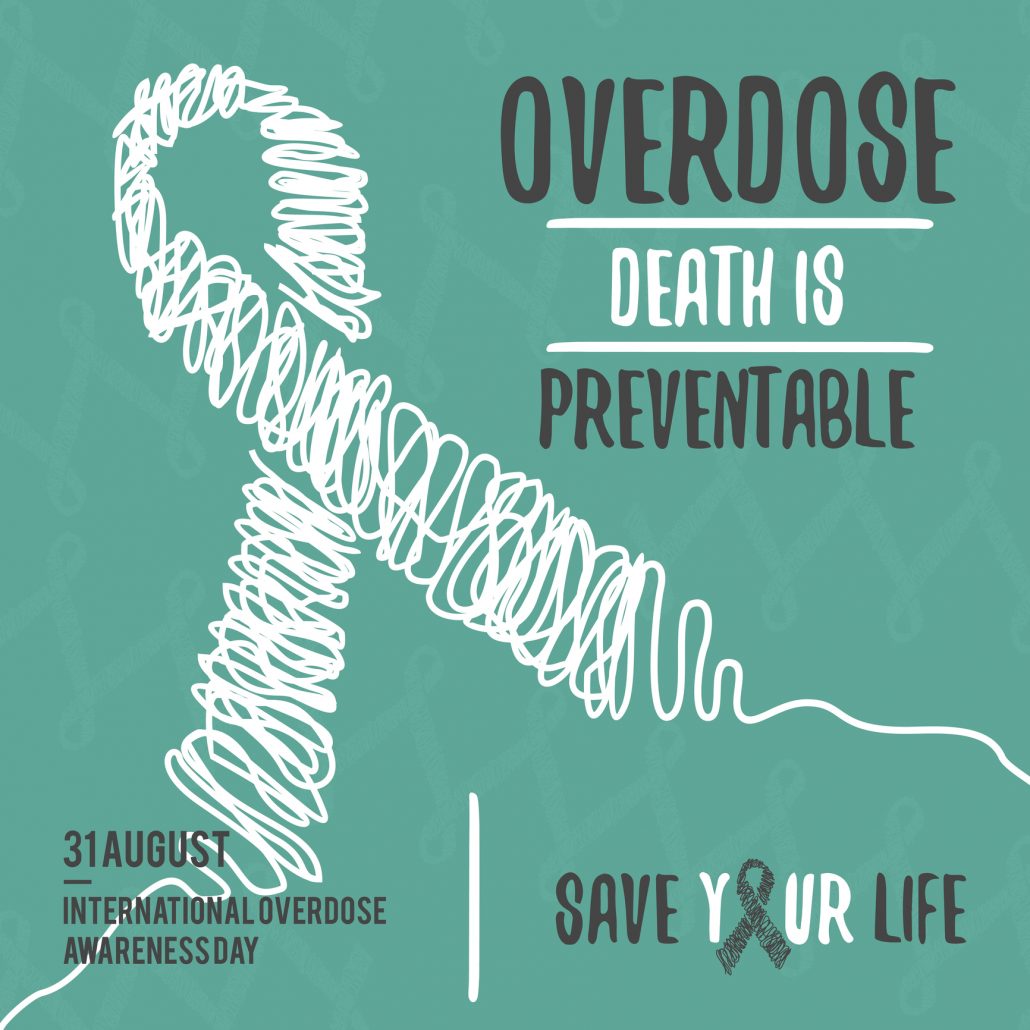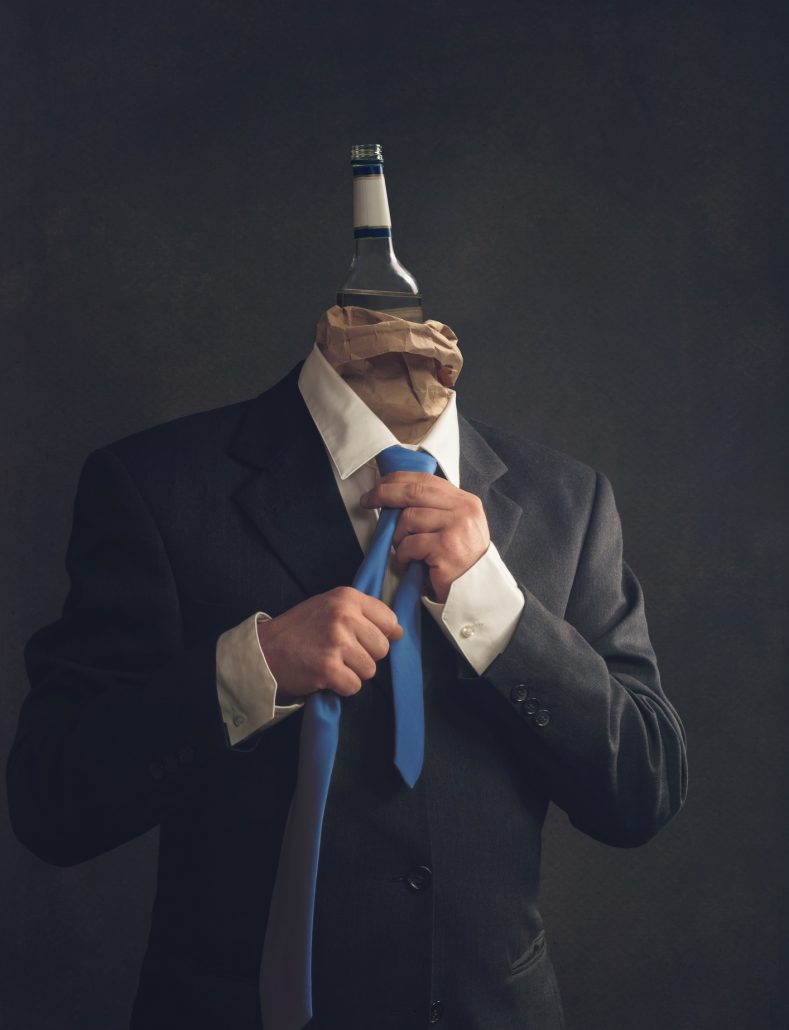by Sher Delva | Sep 7, 2017 | Addiction, Addiction Stigma, Drug Abuse, Withdrawal

If you think heroin is the deadliest opioid in America, think again. While that might have been the case in the past, things have taken a major shift over the past few years.
Heroin led to nearly 16,000 deaths last year, but another popular opioid surpassed that tragic number.
If you have not guessed already, we are talking about fentanyl.
Fentanyl is an opioid that is over a 100 times stronger than street heroin. To put that into perspective, transdermal fentanyl is 100-150xs more potent than oral morphine and is often prescribed to treat advanced cancer patients.
Drug overdose deaths involving fentanyl doubled during 2016, accounting for 25% more deaths than heroin, according to data released by the Centers for Disease Control and Prevention (CDC) earlier this week.
In 2016, the data revealed that 64,000 Americans died of drug overdoses. Out of this number, 20,100 deaths were attributed to fentanyl and other synthetic opioids. If we compared those numbers to heroin deaths, that’s an almost 5000 person difference!
The recent data also reveals how unevenly drug deaths are spread throughout the country:
- In states like Delaware, overdose rates rose 71% between 2016 and 2017 (with 309 deaths during the year).
- Maryland had an increase of 67% for a total of 2,171 overdose deaths.
- Of the states that reported data, only Nebraska, Washington and Wyoming saw a decrease in overdose deaths over the past year.
Fentanyl has been getting a great deal of attention as the drug is responsible for the massive increase in overdose fatalities. For example, last year in Massachusetts, 69% of people who died of an opioid overdose (and had a toxicology screen) had fentanyl in their systems, according to the Boston Business Journal.
Furthermore, in Ohio, fentanyl killed nearly 2,400 people in 2016, which is double the number in comparison to the year prior, according to Cincinatti.com
“It truly is everywhere,” Barbara Carreno, a spokeswoman for the federal Drug Enforcement Agency (DEA), said to USA Today.
Education is Key
Over the summer, the DEA worked to educate first responders about the dangers of fentanyl and other synthetic opioids like carfentanil and acryl fentanyl. These synthetic opioids are strong enough to make even the most casual user overdose and pose a severe threat.
Despite the dangers of addicts receiving a potentially fatal drug, law enforcement officials say the demand for fentanyl continues to rise. This is because fentanyl boost profits for dealers to sell the drug as heroin.
“You can make it as strong as you want, and in bulk and fast,” said Tim Reagan, a DEA agent in Cincinnati.
Still, law enforcement expects fentanyl seizure to become more of the norm at the end of this year.
“I expect that in fiscal year 2017, the numbers of seizures in the mail and express consignment environment (such as FedEx and UPS) will be much higher than they were last year,” said Robert Perez, an acting commissioner with the U.S. Customs and Border Protection (CBP) agency.
Where is it coming from?
Fentanyl is coming from a variety of locations, but one main target is China. China has been singled out as the main source of synthetic opioids like fentanyl. Through the dark web, drug dealers are able to purchase fentanyl from websites hosted in China. They then have shipments sent to the US.
According to the US Customs and Border Protection (CBP), seizures of fentanyl arriving by mail have increased significantly:
- In 2011, 0.09 kilograms of fentanyl were seized by mail
- In 2016 it rose to 37 kilograms
Unfortunately, officials in the United States are expecting the worse when it comes to the opioid crisis. Experts are looking at current trends, and most believe the opioid crisis will get worse before it gets better.
Did you know the major impact fentanyl was having on the opioid crisis? Sadly, when it comes to using drugs, your next high could be your last. Therefore, make a choice to recover from addiction today. Tomorrow may be too late. Do not wait. We are waiting for your call. Call now.
CALL NOW 1-888-922-5398
by Justin Mckibben | Sep 6, 2017 | Alcohol, Binge Drinking, Celebrity, Drug Abuse, Fitness, Neen Williams, Recovery, Sober Fun

For many years Professional skateboarder Neen Williams lived a life of sleepless nights partying while creating a name for himself in the skater world. Born in Chicago, Illinois and currently shredding street tricks in his hometown of Los Angeles, California Williams has managed to attract sponsorship from several brands including:
- Deathwish
- Circa Footwear
- Thunder Trucks
He also has a line of board designs that are all pretty slick. Neen Williams says he’s been skateboarding since he was about 13 years old, and with the territory he found himself smoking and drinking alcohol on a regular basis. Now, at age 31 he has turned his passion into his point of reference for a more sober approach to life.
Sobriety and Skating
Williams admits that he used to have a very different perspective of the life of a skateboarder himself. In a recent video with VICE he states,
“Skateboarding forever was like ‘drink boozes, smoke, we don’t stretch we don’t work out,’ and later in the interview he explains, “Back in the day I used to wake up late, eat like a burrito and slam a beer; go out and skate, manage to get a trick, and it would just be party time again.”
“It would never stop. It was just like a vicious cycle. There were a couple nights I would wake up at 6 or 7 (PM) and it would be dark outside.”
In that vicious cycle, Williams talks about needing days at a time to recover from drinking and partying, and on the last day when he finally felt good enough to get back to skating he would immediately go back to the partying as well.
He goes on to say that he wishes he had known all of this when he was a teenager, but even at 31 years old he is still learning so much. During part of the video interview Neen Williams says that he knows if you take care of yourself, you can skate forever. That, he says, is why he now makes the effort to eat so well and train his body,
“This is why I do all this healthy stuff for myself… because that is what I want, is to skate forever.”
That seems like a really legit reason to take care of yourself; to do what you love forever!
Originally Williams said he decided not to drink for the 6 to 8 month healing period he was told he would need for a torn ACL. Since then, it appears his lifestyle has changed dramatically to make his dream work.
Health Food and Fitness
Even though some may not immediately associate a balanced and healthy diet, along with regular exercise, it appears to have become a crucial element to Williams’ evolution as a skater.
On VICE Williams prepares a breakfast of acai bowls that honestly look stacked with natural goodness. Williams tops off one of the meals he makes- serious serving of what looks like well-blended fruits and vegetables- with diced pineapples and what I would guess to be barriers, almond butter, and granola, it looks like heaven.
You also get to see Williams break out a yoga mat and start stretching himself out. From there he said since Saturday isn’t a week day, he warms up with a quick 200 in to start the day.
When talking about his workout, he compares it to any other athlete. He says football players train to do what they do and they are covered in pads and protective gear. While he admits football players have 300lbs of muscle falling on them, he says the pro skater is usually out in the bare minimum, if anything, fighting sometimes face-first with concrete.
The Deathwish Team Manager, Jay Thorpe, makes a cameo during a street-side video shoot and says it is “really rad to see” when talking about Williams cleaning up his act and committing to the thing he wants to do for the rest of his life.
Williams says that while he doesn’t judge anyone, and doesn’t regret his party days, he has seen a lot of people fall because of it and he likes what he’s doing now. Probably a big inspiring part of Williams’ story is that he says he is glad he went through it and worked his way out of it to be the person he wants to be.
Athletes are put under a lot of pressure to succeed, even professional skateboarders and other extreme sports athletes. Sometimes the lifestyle of pro-sports stars can influence issues with substance use or addiction. Too many talented individuals are held back by these obstacles, but it never too late to get a fresh start toward a better, healthier expression of yourself. If you or someone you love is struggling with substance abuse or addiction, please call toll-free now.
CALL NOW 1-888-922-5398
by Justin Mckibben | Sep 5, 2017 | Drug Abuse, Drug Policy, Heroin, LSD, MDMA

(This content is being used for illustrative purposes only; any person depicted in the content is a model)
For anyone out there who (like me) loves the allure and intrigue of conspiracy theories, the new upcoming mini-series Wormwood on Netflix should absolutely be a Roswell-sized-blip on your radar. The show is described as part documentary, part drama (and in my early predictions- all awesomeness). Set to the backdrop of the 1950s and 1960s, the show is going to delve into the notorious Project MK-ULTRA.
Should we be excited about an intense take on CIA spooks, mind control experiments and a murder mystery?! Uh… YEA! Well, at least I am, obviously. The trailer released shows off cinematography that looks dark, edgy and eerie, with a tone that fits the content. For a little backstory about the twisted conspiracy behind the show Wormwood on Netflix, let’s take a face plant down the rabbit hole of Project MK-ULTRA.
Project MK-ULTRA
The operation began in the early 1950s and was officially sanctioned in 1953. It was designed and undertaken by the United States Central Intelligence Agency (CIA) during the Cold War era when- as the trailer says- “the most dangerous weapon is information.” MK-ULTRA was kept hidden for about two decades due to the fact that the experiments were done on human subjects, which were at times illegal and most notably because the subjects did not consent and had no idea what was being done to them. The organized efforts of the project included entities such as:
- The Scientific Intelligence Division of the CIA
- Special Operations Division of the U.S. Army’s Chemical Corps
These invasive and supposedly damaging experiments were intended to identify and develop drugs and procedures to be used in interrogations and torture. The idea was to learn how to weaken the individual to force confessions through mind control, but the implications of these methods may also suggest far more sinister ways to utilize these tactics.
The Conspiracy
For years people thought it was truly a paranoid dream, and considering the massive scope of the project, once finally revealed, there is no wonder why. According to a 1984 broadcast of 60 Minutes, MK-ULTRA involved more than 130 research programs within various known institutions, including:
- 44 of them being colleges and universities
- 15 research foundations, chemical or pharmaceutical companies
- 12 hospitals or clinics
- 3 prisons
Project MK-ULTRA conducted many illegal activities. One incredibly controversial method was the use of unsuspecting U.S. and Canadian citizens as test subjects. But the most notorious of all is probably the use of LSD and other chemicals to manipulate people’s mental states and alter brain functions.So essentially anyone from inmates and hospital patients to college students and Big Pharma customers could have been exposed to some of the most mind-bending, drug-induced illusions without their knowledge at the will of the United States government.
The world remembers well learning that government agencies were forcing hallucinogenic drugs onto citizens, but this is just one method of psychological torture via drug abuse in Project MK-ULTRA.
Forced Drug Experiments
While LSD is the drug most commonly associated with MK-ULTRA, the program is said to have utilized several other drugs in their illegal testing, including:
- Heroin
- Morphine
- Psilocybin (magic mushrooms)
- Methamphetamine
- Barbiturates
- MDMA
- Temazepam
- Mescaline
- Scopolamine
- Marijuana
- Alcohol
- Sodium
- Pentothal
The CIA Cover Up
To touch on the timeline of Project MK-Ultra being exposed:
1973- CIA Director Richard Helms ordered all MK-ULTRA files destroyed
1975- The Church Committee of the U.S. Congress first brought MK-ULTRA to the attention to the public.
A Gerald Ford commission was tasked to investigate CIA activities within the United States. Investigative efforts were hampered by the fact the destruction of the documents in 1973.
1977- Senate hearings began following a request from the Freedom of Information Act that uncovered a cache of 20,000 documents connected to MK-ULTRA.
2001- Even more information regarding MK-ULTRA became declassified
Now the world is well aware that the CIA, in cahoots with other entities, was behind hundreds of mind-control experiments. These horrific tortures and inhumane experiments are said to have left some people mentally and emotionally crippled for life. Hopefully, the new series Wormwood on Netflix will also give us a closer look at home some of these victims were able to recover, if at all.
Wormwood on Netflix makes it Personal
Academy Award-winning director Errol Morris gives this illustrious conspiracy story new texture and connection using dramatic reenactments with real-life interviews. Beyond that, the series Wormwood on Netflix also stands to humanize the drama, making it a much more personal and relatable scenario.
Enter the incarnation portrayed by Peter Sarsgaard of Dr. Olson. The real-life CIA biochemist Dr. Frank Olson died after falling 10 stories from a New York City hotel room in 1953. Dr. Olson’s death at the time was ruled a suicide. However, his family and others believe that he was actually assassinated by the CIA. Dr. Olson’s son, Eric Olson, is also part of the series.
Eric Olson and his brother Nils have made it their life’s mission to uncover the truth about their father’s death. Eric Olson has spent over 60 years investigating.
As if an indirect admission of fault, the Olson family actually received a settlement of $750,000 and a personal apology from then-President Gerald Ford and CIA Director William Colby. This came 20 years after Olson’s death in 1976, after all the documents pertaining to MK-ULTRA began to surface. Then in 1994, a second autopsy was conducted on the body of Frank Olson, which is said to have revealed injuries that had “likely occurred before the fall” leading many to believe that Frank Olson was killed by the CIA.
One way or another, Wormwood on Netflix is sure to be a very interesting ride. With the ominous overtone of impending espionage, chemical warfare, spy games and murder this show is set to take something that is so real it’s scary and packages it in a way that is sure to pull us in.
At risk of tempting a Netflix binge, there are some very good documentaries and other films related to substance abuse, drug policy and addiction. There are all kinds of resources out there to stay informed about the history of drug use and the risks associated with it. Find a way to learn more and if you or someone you love is struggling with substance abuse or addiction, please call toll-free now.
CALL NOW 1-888-922-5398
by Sher Delva | Aug 31, 2017 | Addiction, Addiction Stigma, Drug Abuse, Mental Health, Stigma

(This content is being used for illustrative purposes only; any person depicted in the content is a model)
The elderly population frequently is ignored when it comes to drug addiction. After all, when most people think of the word “drug addict,” they typically picture someone in their 20s and 30s. The media depicts addiction as mostly affecting youth. While it is true that the youth population is heavily affected, the middle-aged and elderly drug addiction rates are also rapidly rising.
Millions of older Americans receive painkiller prescriptions for chronic conditions such as back pain, arthritis, and headaches. Eventually, some of these older adults become addicted. Pain prescriptions are a serious problem, and it is important the elderly population receive the same attention as the younger population. Addiction does not discriminate. Everyone needs treatment.
Prescription pain medications can do just as much harm as heroin peddled on the streets. Even worse, when a patient is not able to gain access to their pain prescriptions, they often turn to heroin as a cheaper alternative. The heroin on the street is more dangerous because there is no way to know what is being distributed. Often, heroin on the street is laced with powerful opioids like fentanyl which increase a person’s vulnerability to an overdose.
The Middle-Aged and Elderly
The Agency for Healthcare Research and Quality reported a sharp increase in hospitalization from prescription drug abuse among Americans aged 45 to 85 and beyond. According to the Center for Disease Control and Prevention, the highest death rates from drug overdoses were reported among middle-aged adults between 45 and 54.
One study revealed that 20 percent of people over the age of 65 take painkillers several times per week. The rate of addiction among chronic pain patients is at an astonishing level of 18 percent. Dr. Andrew Kolodny is the chief medical officer of the Phoenix House Foundation. He explained in a recent article that the highest rates of overdose deaths are in patients who have legitimate prescriptions for managing their chronic pain problems.
Older patients are more able to find opioids because doctors are more willing to prescribe them. Dr. Kolodny points out that improperly using opioids increases the risk of dependence. Shockingly, if someone were to take several doses a day, physical dependence could occur in as little as five days.
Opioid Addiction from Painkillers
Older Patients taking pain medication are less likely to notice the onset of addiction. It’s typically the family or caregivers that begin to notice the changes in behavior. Often, these older patients are unaware that they are becoming dependent on opioids until a negative consequence occurs.
Furthermore, seniors on opioids are at a higher risk of falling, which increases the risk of devastating fractures.Because many seniors take several medications at a time, there is a potential for harmful drug interactions. For example, an opioid could interact with another drug like a sleeping medication and increase the risk of respiratory depression and sedation.
It is important that seniors have an understanding of this risk. If a patient has a history of alcohol use, it is critical that healthcare providers are aware. The enhanced effects of opioids combined with alcohol results in negative consequences. Nonetheless, one does not need to be a drinker to have a problem with opioids.
A Way Forward
The reality is that close to 50 percent of people age 65 and older deal with chronic pain. While it is important for doctors to address the pain of their patients, it is also just as important to inform patients of the risk of addiction when taking prescriptions opioids.
A journal review found that short-term prescriptions have less of a risk for dependence compared to long-term opioid treatment. While the risk for addiction lowers as a patient becomes older, there is still a risk. Doctors should review each case individually. Addiction is always a possibility with opioids.
There are a variety of alternative pain management treatments making headlines now. Pain management devices are one way that could help reduce opioid dependency. Many chronic pain sufferers also find that combining physical therapy with massage therapy helps reduce pain and improve mobility.
Other pain management options include
The statistics surrounding the middle-aged and elderly population are tragic, but even more tragic is the effect opioid addiction has on friends, relatives, and the overall community. Addiction affects everyone, not just the addict.
Overall, it is important that these age populations know the risk as opioid addiction rates continue to rise. Recovery is possible. Please reach out if you or someone you know is struggling with drug addiction. Do not wait. Call today.
CALL NOW 1-888-922-5398
by Sher Delva | Aug 30, 2017 | Addiction, Addiction Stigma, Drug Abuse, Mental Health, Stigma, Therapy, Uncategorized, Withdrawal

Today, August 31, marks International Overdose Awareness Day. The purpose of this day is to raise awareness and reduce the stigma of drug-related deaths. This day intends to acknowledge the pain and hardship felt by friends and family who have suffered the loss of a loved one due to a drug overdose.
International Overdose Awareness Day is a day that hopes to reduce the shame and guilt that is so often associated with addiction. The day aims to provide an opportunity for people to publicly mourn for loved ones without feeling guilt or shame.
International Overdose Awareness Day Focuses on:
- Giving communities information about fatal and non-fatal overdoses
- Sending a strong message to current and former drug users that they are valued
- Providing essential information regarding resources available in their community
- Raising a discussion about overdose prevention and drug policy
- Preventing and reducing harm by supporting evidence-based policies and practices
The Shocking Reality
Drug overdoses are the number one cause of preventable death in America. Today is a day to spread awareness to others about the disease of addiction. Addiction does not discriminate. It affects everyone.
The United States is facing a major drug epidemic.
Facts & Stats:
- The United States accounts for approximately one-quarter of the estimated number of drug-related deaths worldwide.
- Overdose deaths continue to rise, and these overdoses are driven by opioid use.
- Overdose deaths have more than tripled in the United States during the period of 1999-2015, from 16,849 to 52,404 annually.
- A recent report by STAT states the opioid epidemic is predicted to get a lot worse before it gets any better if it gets better at all.
- The third quarter of 2016, saw all drug overdose deaths peak at 19.9 cases for every 100,000 people, compared to the 16.7 in the same period last year.
- Another report found that the number of drug overdoses involving opioids between 2008-2014 was likely underestimated by 24%.
- Substances like fentanyl are close to 50 times stronger than heroin, and the increased presence of these opioid have significantly increased the number of opioid overdoses.
So what is an overdose exactly?
An overdose means taking too much of a drug or a combination of drugs for a body to tolerate. Overdose symptoms vary depending on the drug abused. Opioids, benzos, and alcohol all cause overdoses. These drugs slow down the nervous system which includes breathing and heart rate. Too much of these substances can kill or cause permanent brain damage to the user.
Signs of a drug overdose on opioids include:
- Shallow breathing or not breathing at all
- Snoring or gurgling sounds (this can mean that a person’s airway is partly blocked)
- Blue lips or fingertips
- Floppy arms and legs
- No response to stimulus
- Disorientation
- Unconsciousness.
If you think someone has overdosed, please seek help immediately. Not all overdoses happen quickly, and it can take hours for someone to die from an overdose depending on the severity. Naloxone, known by the brand name Narcan, is an overdose antidote that reverses an overdose from opioids.
Fight to Increase Access to Narcan
Narcan is now in the hands of first responders. It can be found in schools and even over-the-counter depending on the area you reside. Please look into where you can purchase and receive training.
If you know someone who has overdosed, show your support on International Overdose Awareness Day. Now, more than ever is the time to share the truth about addiction. We need to end the stigma.
How to Get Involved
There are a variety of resources available on the International Overdose Awareness Day website. The website has an area where loved ones can write and grieve anyone they have lost. These tributes are where many share the impact drug use, and overdoses have had on their family and friends. There is also an overdose awareness app that shares information on what an overdose is, and the main overdose symptoms. Please see the website for more information and to look for events in your local area.
—-
How are you going to raise awareness of International Overdose Awareness Day? The impact of addiction continues to influence the lives around us. Let’s end the stigma. If you are struggling with substance abuse, do not wait for it to progress into an overdose. We can help you get back on track. Please call toll free today. Do not wait.
CALL NOW 1-888-922-5398
by Justin Mckibben | Aug 29, 2017 | Addiction, Alcohol Addiction, Drug Abuse, Drug Policy, Inpatient Treatment, Outpatient Treatment, Professionals

With substance use disorder and addiction being such a prevalent problem in America, we think it is crucial for people to understand substance use and addiction as best as they possibly can. Part of looking at which professions have the highest rate of substance use disorder is not just about making people aware of how common it is in the workplace, but also to break the stigma of substance use disorder and show that drugs and alcohol impact people in every workplace, from entry level to executives.
Resources of Substance Use Rates
In April of 2015 the Substance Abuse and Mental Health Services Administration (SAMHSA) released a survey that combined data collected by the National Survey on Drug Use and Health (NSDUH) from every year between 2008 and 2012 to find out which professions held the highest rates of:
The NSDUH assess symptoms of dependence or abuse of alcohol or drugs through a series of questions included in their survey. The questions are based on the criteria described by the fourth edition of the Diagnostic and Statistical Manual of Mental Disorders (DSM-IV). It defines illicit drugs as:
The NSDUH uses the definition of heavy alcohol use of:
- 5 or more drinks on the same occasion
- 5 or more days in the past 30 days
The rating system includes full-time workers from age 18 up to age 64.
Which Jobs Have the Highest Rates of Substance Use Disorder?
In the following categories, number represents the percentage of works out of all those surveyed between 2008 and 2012.
Heavy Alcohol Use
- Mining workers- 5%
- Construction- 5%
- Accommodations/Food Services- 8%
- Arts/Entertainment/Recreation- 5%
- Utilities- 3%
- Wholesale trade- 2%
- Management/Administrative support/waste management- 9%
- Manufacturing- 7%
- Agriculture/forestry/fishing/hunting- 4%
- Retail trade- 0%
- Transportation and warehousing- 8%
- Other services (except public administration)- 5%
- Real estate/rental/leasing- 5%
- Information- 1%
- Professional/scientific/technical services- 7%
- Finance and insurance- 4%
- Public administration- 6%
- Educational services- 7%
- Health care and social assistance- 4%
Illicit Drug Use
The overall rate of illicit substance use among full-time workers, between the age of 18 to 64 years old, who admitted to having used within a month of taking the survey was 8.6% of workers. That may not seem like a lot, but when you consider that is a percentage of ALL professions it is actually a lot bigger than you think.
- Accommodations and food services- 1%
- Arts/Entertainment/Recreation- 7%
- Management/Administrative support/waste management- 1%
- Information- 7%
- Construction- 6%
- Other services (except public administration)- 2%
- Real estate/Rental/Leasing- 9%
- Retail trade- 3%
- Professional, scientific and technical services- 0%
- Wholesale trade- 8%
- Manufacturing- 4%
- Finance and insurance- 5%
- Utilities- 1%
- Transportation and warehousing- 9%
- Agriculture/Forestry/Fishing/Hunting- 7%
- Health care and social assistance- 5%
- Mining- 0%
- Educational services- 8%
- Public administration- 3%
Substance Use Disorder
When it comes to substance use disorder the data is collected for full-time workers from age 18 to 64 that fit the criteria for substance use disorder within a year of taking the survey. The rates of substance use disorder in different professions include:
- Accommodations and food services- 9%
- Construction- 3%
- Arts/Entertainment/Recreation- 9%
- Mining workers- 8%
- Utilities- 5%
- Management/Administrative support/waste management- 4%
- Retail trade-5%
- Agriculture/Forestry/Fishing/Hunting- 5%
- Wholesale trade- 4%
- Other services (except public administration)- 1%
- Real estate/Rental/Leasing- 0%
- Information- 8%
- Finance and insurance- 4%
- Manufacturing- 3%
- Transportation and warehousing- 1%
- Professional, scientific and technical services- 8%
- Public administration- 2%
- Health care and social assistance- 7%
- Educational services- 5%
Different Job Substance Use Trends
When looking at these rankings we can see a few professions that are consistently represented in the top five of all three categories.
NOTE: Remember the top ranks are not based on the overall number of users, but on the percentage of the total industry.
#1 in Heavy Alcohol Use– Mining Workers
121,000 mining workers that were surveyed contributed to the top ranking percent in an industry for heavy alcohol use. This number may seem small compared to the high numbers of heavy alcohol use in other professions. But think of it like this- If there are:
- 100,000 nurses and 70 of them drink heavily
- 100 miners and 70 of them drink heavily
Which would you think it a bigger issue?
#1 in Illicit Drug Use– Accommodations and food services
Accommodations and food services came in as the top rated profession for illicit drug use. According to the numbers of all those in this industry measured, approximately 1,169,000 were recorded for illicit drug use within a month of the survey.
This statistic does not change when accounting for gender or age differences. What this suggests is there may be something unique about this industry and how people end up using drugs more often working in accommodations and food services more than anywhere else.
#1 in Substance Use Disorder- Accommodations and food services
In terms of substance use disorder the accommodations and food services industry again come in at the top of the list. This time, the numbers of those surveyed shows that approximately 1,038,000 people in this profession actually fit the criteria from the DSM-IV for substance use disorder.
But unlike with illicit drug use, this rating did not stay the same when adjusting for age or gender differences. So what does that mean?
It means the higher rates of substance use disorder in the accommodation and food industry depends on the demographics employed in that industry. For example, if you look at age:
- 18-25 years old this industry is number 2
- 26-34 years old its number 1
- 35-49 years old this industry is number 3
- 50-64 years old its only number 11
So What Jobs are the Worst for Substance Use Disorder?
The big thing here is we must acknowledge that there are variables like age and gender that actually will make a big difference as to which jobs are ‘worse for substance use disorder’, while also recognizing the issue of substance use and addiction is not one size fits all. It is a different story for every individual. There is a formula that takes environment into account, but that formula is not the same for everyone.
A young woman working in the accommodations and food services industry might have a harder time staying off drugs than she might as a school teacher… or maybe not. Young men working in social assistance might find it a lot easier to stay off of drugs than one working in construction. It isn’t a guarantee, but it is a trend we can note.
So, does your job put you in an industry with higher rates of drinking, drug use or addiction? Are you more likely to have co-workers or employees that struggle with substance use than in another position?
With data like this we have to ask- does the job make an impact?
When we consider how central our jobs are to our everyday lives, we should take into account what kind of workplace we put ourselves in and what we have to offer. It is the same thing for those of use trying to work toward recovery. Substance use disorder recovery can be a lot of work, but it is definitely worth the livelihood you stand to gain from it. If you or someone you love is struggling with substance abuse or addiction, please call toll-free now.
CALL NOW 1-888-922-5398







